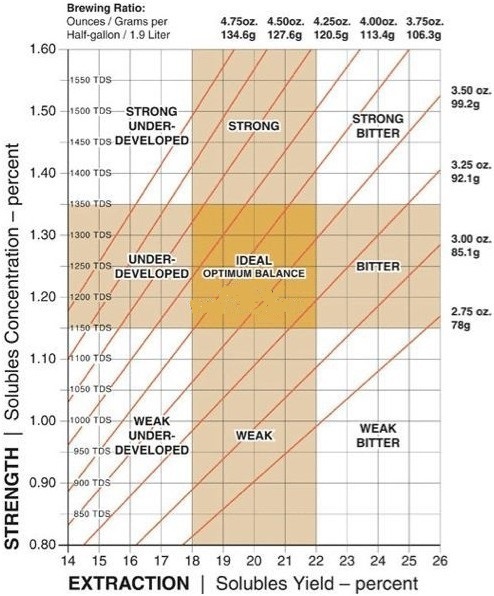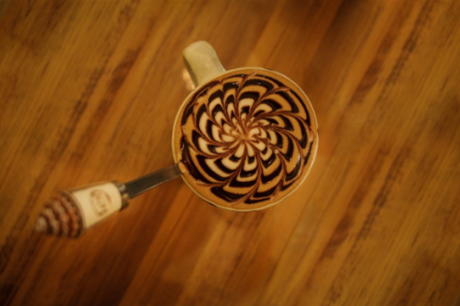A brief discussion on the difference between Coffee blending and Coffee roasting individual Coffee and mixed Coffee Italian blending ratio
Coffee starts with "origin" and "taste", of course, without "variety", because at first people only consume coffee grown in the area around them. However, with the development of trade, the types of coffee are gradually mixed. Today, although good coffee from a single variety or origin can be directly cited, coffee is essentially a mixed drink-like champagne or some wines. Indeed, some people think that the best coffee is made by mixing the best qualities of different coffees-the bright acidity, the rich floral aroma, and the mellow taste.
Blending has been an art form for a long time-MochaMysore is a popular combination of two different varieties of coffee, focusing on the mild aroma of Mysore and the strong flavor of Mocha-but generally speaking, it is only for commercial purposes. The primary goal of Robusta blending Arabica is to reduce its price, and there is no denying that almost all blends created can produce better economic profits than a single variety of coffee sold separately.
The key to matching is that the nature must be continuous and consistent. All commercial blends aim for stability, and some of them are excellent, such as Finnish Paulig, Swedish Gevalia, Zeogas and AvidNorquis and Dutch DonweEgberts, which are unique premium coffee mixes.
For people who have just started drinking coffee, breakfast coffee is an ideal choice. This is a carefully roasted coffee, usually made of African coffee with milk, or a mixture of two moderately roasted Kenyan and Colombian coffees to start a refreshing and fragrant day. Mix coffee with the same ingredients after a meal, but roast them deeply to tap for more flavor. One of the best is Indonesian coffee, which is mixed with a little Kenyan and Costa Rican coffee to make the coffee more unique and elegant.
The coffee that is already rich and deeply roasted has an obvious bitter taste at first, but you'll soon get used to it. The strongest coffee is a deep-roasted continental blend, which is made into Italian concentrate and is popular throughout southern Italy for its unique bitterness, but almost no one cares about it elsewhere. The blended coffee in northern Italy has a light roasting degree, uniform texture and soft acidity, such as high-quality wine.
Nothing can stop you from creating your own match, but it doesn't advocate mixing two opposing beans, such as Ethiopia and Sumatra. When the two are mixed, the wine smell of Ethiopian beans makes the strong smell of Sumatran beans smell like dirt. But you can try mixing good Colombian and Sumatran beans, or try to find the best match between deep-baked and light-baked beans.
For some people who want coffee that tastes soft and not bitter, Arabica such as Columbia beans or Chagga in Tanzania can try, although Chagga has a slight acidity. For those coffee with strong flavor, it depends on how well it is roasted. Of course, for coffee, especially soft varieties like Brazil and Costa Rica, although you can roast them deep and taste strong, they can't be any more bitter. But if you add a little Robusta to it, you'll get a little astringent, a little bold. You can mix different flavors and characteristics in different combinations. Chagga-Java-Mocha is a good example, which includes the mellow taste of Java, the soft acidity of Chagga and the rich texture of Mocha.
The ideal way is to buy a small amount of raw beans, bake them yourself, and grind the beans directly before making coffee. However, most of us have to buy baked beans, and maybe this number will increase in the near future.
When storing beans, the biggest enemy is water. The volatile oils that give us aroma in the cup are soluble in water, and a humid environment can affect the oil. Do not store coffee in the refrigerator, because once the coffee is opened, the moisture will condense on the surface of the container.
If you want to store the coffee well at any time, the best way is to put it in the freezer and make sure it is encapsulated in a sealed bag. Baked beans can be stored in the freezer for more than a week. When you need them, don't try to thaw the beans, just put them in the grinder.
Another big enemy of coffee is oxygen, which breaks down volatile aromatic oils. This is the importance of grinding beans directly before making coffee. After the coffee is ground, its surface is exposed to the air, which means that the aromatic oil begins to volatilize and the flavor disappears in the air.
Don't store coffee next to products with strong flavors, such as tea. Coffee will quickly absorb the taste of other substances.
If you buy coffee by mail, it is best to buy only a small amount at a time. Although the quantity is good, you will lose the value of these coffees, just as you will lose their aroma.
Today, American consumers have more than 100 flavors of coffee to choose from, many of which are sold abroad. The production process of flavored coffee is to spread the roasted beans with medium oil and let them spray quickly in the fragrance to achieve. This practice began in the United States in the 1970s.
The most popular flavors are cocoa, mocha, bitter almonds and double cocoa. Orange wine and nutty flavors are also available, although strict coffee drinkers draw lines between raspberries, bananas and creamy beans to make a clear distinction. The newly introduced coffee flavor in the West is cardamom, which has long been added to coffee in the Middle East, while in Mexico, it is also a popular and traditional additive.
One problem for small shops and strict coffee drinkers is that for different flavors of coffee, they need a separate grinder, because any residue will affect the taste of the beans to be ground next time. When preparing a new flavor of coffee, you will find it necessary to buy a small and cheap grinder, or buy pre-ground coffee directly.
The first three most widely used coffee flavors in France and the United States are almonds, vanilla and hazelnuts. Their best selling time is in summer, because they usually drink less coffee in summer, and iced coffee is the most pleasant choice.
The phrase "decaffeinated coffee doesn't taste like coffee" is only partly true. Caffeine itself has no special taste except for mild bitterness. When caffeine is removed, it tastes different, only because other substances that contain fragrant flavors are also removed.
Raw beans from all over the world that want to be decaffeinated are shipped to Germany or Switzerland, where they are processed and sent to baking centers around the world. It is common that raw beans from Mexico are sent to Switzerland to get rid of caffeine and then across the Atlantic to roasters in San Diego before returning to their place of origin.
Early decaf refers to a method in which raw beans expand in high-temperature steam, absorb solvents that destroy caffeine, and then release solvents and their residues in high-temperature steam. The factory then encapsulates it with dichloromethane, which prevents it from being affected by other flavors. But dichloromethane was banned in Europe in 1995 because it escapes into the air and destroys the ozone layer.
There is a method that requires only water and activated carbon processors, called Swiss water treatment. This method is patented by CoffexSA, and the process is complex and expensive. This includes soaking beans in water to remove caffeine and aromatic substances. Caffeine is removed by activated carbon in water and the beans are roasted dry. But the aroma is still in the water, so the water should be evaporated and concentrated, and then sprayed back on the dried coffee beans.
The taste of coffee has been changing all over the world in recent years. As we can see, the fastest and biggest change is in the United States. Many coffee lovers hope that European countries, like the United States, can guide more manor coffee and native coffee. The traditional European coffee sale is a mixture of varieties or just a simple "Guatemala". Compared with coffee from a variety of producing areas, the advantage of variety mixing is that it can be consistent during long-distance transportation, reduce damage, and make it easier to make. However, these coffees do not meet the criteria of a real YaucoSelecto or Kona. Now, for them and those refined coffee, the outlook will be more promising than ever.

Source: Beresta's blog
Important Notice :
前街咖啡 FrontStreet Coffee has moved to new addredd:
FrontStreet Coffee Address: 315,Donghua East Road,GuangZhou
Tel:020 38364473
- Prev

Introduction of SCAA American Fine Coffee Association Gold extraction ratio extraction time Flavor Wheel Meter
The proportion of SCAA fine cup coffee defined by the Gold Cup Fine Coffee Association of the United States and the scae European Fine Coffee Association must be about 20% of the coffee extraction rate, while the TDS is about 1.1% to 1.3%. For Drip Filter dripping and brewing, how to extract the best coffee flavor is controlled by two variables: the extract of coffee powder and the concentration in a cup of coffee.
- Next

Mocha Coffee: fancy coffee flavored with chocolate sauce in Asia, Yemen and Ethiopia
In 575 AD, the first coffee bean took root on the other side of the Red Sea in Yemen, far from its hometown of Ethiopia. It was transformed into mocha coffee, and it started the coffee business all over the world. What is a mocha? There are many kinds of answers. Some people say that mocha refers to the place of origin. Some people say that mocha refers to sweet chocolate coffee. In fact, both views are biased. Authentic
Related
- What is the meaning of lactic acid fermentation with coffee bean treatment?
- How to judge the state of foam by sound?
- How does the latte pull out the unicorn pattern? Come to get for a little trick to improve the flower pull!
- Will flower pulling affect the taste of the latte?
- Do you know the history of coffee?
- The difference between honey treatment and sun washing what is raisin honey treatment?
- What kind of milk can a novice use to make coffee foam to keep the foam longer? The correct method and skills of milking tutorial sharing
- Why do washed coffee beans taste sour? Flavor characteristics of washed Coffee
- Introduction to the skill of how to practice the size and height of water injection around the circle of hand-brewed coffee
- How do beginners practice coffee flower drawing from scratch?

